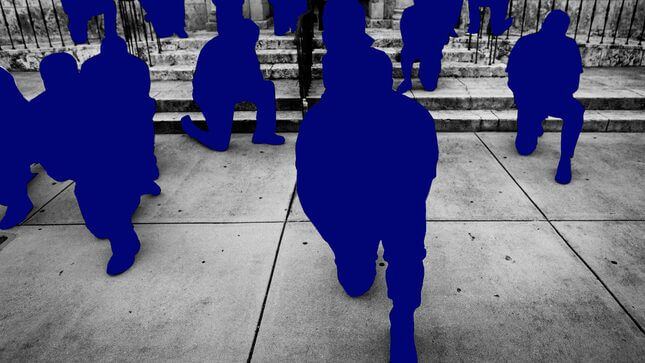Police Kneeling Is Meaningless
Latest
Illustration: Elena Scotti/GMG (Photo: Eva Marie Uzcategui/Getty Images)
“Powerful” is how CBS News described a photograph of police kneeling at a protest over the weekend. The photograph showed police from departments across Miami-Dade county kneeling at a protest held in Coral Gables, Florida. The officers, CBS reported, kneeled in “solidarity with protesters,” promising that they would continue “dialogue” with the organizers. The gesture was performative at best, done solely for the purpose of producing an image, one that would be reproduced and celebrated as truth, made indisputable by the documentary force of the photograph. And mainstream news organizations like CBS News did just that, treating the Gables photograph as indicative of a broader sentiment that supposedly manifested everywhere from New York City to a police blockade in front of Donald Trump’s Washington, D.C. hotel to Ferguson, Missouri, and St. Paul, Minnesota, where police kneeled on their own after protesters refused to join them. The images of police kneeling suggested that there are plenty of good cops invested in the sentimental project of national unity—perhaps even “healing,” as the rhetoric usually demands—even as images of protesters being brutalized by police forces proliferated.
-

-

-

-

-

-

-

-

-

-

-

-

-

-

-

-

-

-

-

-

-

-

-

-

-

-

-

-

-

-

-

-

-

-

-

-

-

-

-

-









































